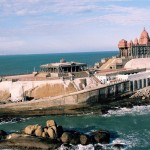The Nilgiri Biosphere Reserve was the first biosphere reserve in India established in the year 1986.The reserve is situated in the Western Ghats, in the Nilgiri Hills range of South India and is considered as an International Biosphere Reserve. The total area of the Nilgiri Biosphere Reserve is 5,520 sq. km. The annual rainfall of the reserve ranges from 500 mm to 7000 mm.It was declared under the Man and Biosphere Programme (MAB) of UNESCO and is also under consideration by the UNESCO World Heritage Committee for selection as a World Heritage Site. Nilgiris Biosphere Reserve is India’s first and front-most biosphere reserves with a heritage, rich in flora and fauna.There are six protected areas within the reserve and still larger tracts of forests that lie outside of these, known as Reserve Forests.The primary objectives behind establishing the reserve include conservation of the unmoved genetic diversity of species, restoration of degraded ecosystems to their natural conditions, providing data for ecological and environmental research and education and functioning as an alternative model for sustainable development.
The Mudumalai Wildlife Sanctuary, Wayanand Wildlife Sanctuary, Bandipur National Park, Nagarhole National Park, Mukurthi National Park and Silent Valley are the protected areas present within Nilgiri Biosphere Reserve.
The Nilgiri Biosphere Reserve has over 100 species of mammals, 350 species of birds, 80 species of reptiles, about 39 species of fish, 31 amphibians, and 316 species of butterflies. It includes the tiger, Asian elephant, and Nilgiri tahr.
The Nilgiri Biosphere Reserve is very rich in plant range. About 3,300 species of flowering plants can be seen here. Of the 3,300 species 132 are endemic to the reserve. The genus Baeolepis is exclusively endemic to the Nilgiris. Some of the plants entirely restricted to the Nilgiri Biosphere Reserve include species of Adenoon, Calacanthus, Baeolepis, Frerea, Jarodina, Wagatea, Poeciloneuron, etc.
Of the 175 species of orchids found in the Nilgiri Biosphere Reserve, eight are endemic. These include endemic and endangered species of Vanda, Liparis, Bulbophyllum, Spiranthes and Thrixspermum. The sholas of the reserve are a treasure house of rare plant species.
How to Reach:
By Train:Only the Nilgiri Express train runs from Chennai to Mettupalayam is available.
By Bus: All buses is available at Tamil Nadu.
By Airport: Coimbatore Airport is the nearest Airport located 70km from the Nilgiri Biosphere Reserve.











Add Nilgiri Biosphere Reserve Feedback, Comments, Reviews